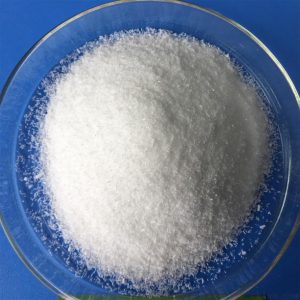Classification of surfactants
Surfactant is a substance that can significantly reduce its surface tension and change the interfacial state of the system when a small amount is added to the solvent, so as to produce a series of effects, such as wetting or anti-wetting, emulsifying or demulsifying, dispersing or agglutinating, foaming or antifoaming, and solubilizing, etc., in order to meet the requirements of the actual application.

It is generally believed that it is more appropriate to divide them according to their chemical structure. That is, when the surfactant is dissolved in water, it is divided into ionic surfactant and non-ionic surfactant according to whether it generates ions and its electrical properties.
Image
Cationic surfactants
1
Ammonium salt
The hydrochloride salt of the corresponding amine is formed by the reaction of primary amine and secondary amine with hydrochloric acid.
2
Quaternary ammonium salt
Using stearic acid, oleic acid and other cheap fatty acids and low-grade amine reaction can be good quaternary ammonium salt cationic surfactants. Commonly used varieties include benzalkonium chloride (Jie Ermu) and benzalkonium bromide (Xin Jie Ermu).
Image
Anionic surfactants
1
Carboxylate
Salt of high-level fatty acid, general formula: (RCOO-)n M. Fatty acid hydrocarbon R is generally a long chain of 11-17 carbons, and common ones are stearic acid, oleic acid, and lauric acid.
Image

2
Fluorine mold release agents
Mainly sulfated oils and advanced fatty alcohol sulfates. The aliphatic hydrocarbon chain R is between 12-18 carbons. Sulphated oils are represented by sulphated castor oil, commonly known as Turkish red oil (sodium salt of ricin sulphate). Higher fatty alcohol sulfates include sodium dodecyl sulfate (SDS, sodium lauryl sulfate).
Image

3
Sulfonates
Sulfonates have the chemical formula R-SO3Na and the number of carbon chains in the carbon chain is between 8 and 20. These surfactants are mainly used in the production of detergents, are easily soluble in water and have good foaming effect.
a/ Alkyl benzene sulfonate
The most commonly used is sodium dodecylbenzene sulfonate, which is white powder, easily soluble in water, has good washing ability and foaming performance, and is used in a large number of laundry detergents and household cleaning agents.
b/ Alkyl sulfonate
The detergency of alkyl sulfonate is similar to that of straight chain alkyl benzene sulfonate, but its stability to hard water and biodegradability are better. The common ones are sodium dioctyl succinate sulfonate (Alosol-OT), which is a white waxy plastic material, easily soluble in water and ethanol, stable in hard water, with good washing and foaming performance, non-toxicity, little irritation to the skin, and good wetting performance, so it is mostly used in the production of shampoos, foam baths and toothpastes.
Image
Sodium dioctylsuccinate
c/ Petroleum sulfonate
Petroleum sulfonate is a mixture of various sulfonates, the main component is complex alkyl benzene sulfonate and alkyl naphthalene sulfonate, followed by aliphatic hydrocarbon sulfonate and cyclic hydrocarbon sulfonate and its oxides. Commonly used as emulsifier, foam agent, dispersant, corrosion inhibitor and oil recovery.
4
Phosphate ester salt
Phosphate ester salts have monoester and diester salts, the chemical formula are:
Image
. This kind of surfactant has good stability to acid and alkali, easy biodegradation, good washing ability, especially for hard surface cleaning ability is better, can be used for metal cleaning and plating, and because of the solubility of organic solvents, can be used as a dry cleaning detergent with solvents.

